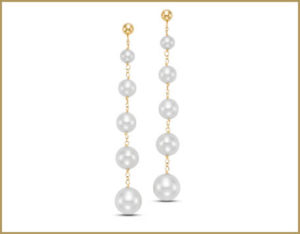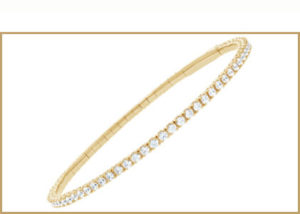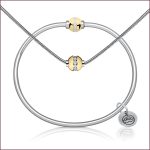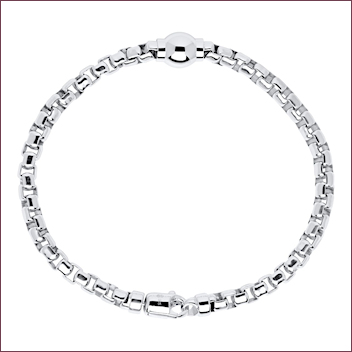Strategies to Navigate 2020 Uncertainty
The outlook among economic forecasters is positive for U.S. retail sales for the holiday season and year in total.
The National Retail Federation (NRF), in its annual holiday forecast conducted by Prosper Insights & Analytics, estimates that retail sales overall, from November through December will be up about 3.8 to 4.2 percent over 2018, totaling between $727.9 and $730.7 billion.
Deloitte, the London-based multinational financial advisor is more bullish in its forecast predicting U.S. holiday retail sales will likely rise 4.5 to 5 percent in 2019, exceeding $1 trillion in sales from November to January. Even Kiplinger, the Washington, D.C.-based publisher of business forecasts and personal finance advice, predicts a 5.4 percent growth.
 A healthy labor market, with near record-low unemployment rates and continued monthly job creation is encouraging people to spend more during the holidays, reports Daniel Bachman, Deloitte’s U.S. economic forecaster. “The economy is still growing, albeit at a slower rate. We continue to see consumer confidence elevated, which helps boost holiday spending.”
A healthy labor market, with near record-low unemployment rates and continued monthly job creation is encouraging people to spend more during the holidays, reports Daniel Bachman, Deloitte’s U.S. economic forecaster. “The economy is still growing, albeit at a slower rate. We continue to see consumer confidence elevated, which helps boost holiday spending.”
While the short-term consumer sentiment is positive, headwinds are forming, Deloitte signals. For the first time since 2012, fewer than 40 percent of consumers in its survey expect the economy to improve in 2020. This reflects a 13 percent decline from 2018.
NRF president and CEO Matthew Shay sees uncertainty around issues including trade, interest rates, global risk factors, and political rhetoric. Consumers are in good financial shape, but he says consumer confidence could erode by deterioration of these and other variables.
In the New Year
Make Things Convenient: Paramount for shoppers is convenience, which Rod Sides, vice chairman, Deloitte LLP and U.S. calls the new retail currency. “Retailers who offer seamless experiences, have products available, and can deliver items more quickly than ever are most likely to win.” Important to shoppers are options like free shipping, same-day delivery, and buy online pick up in store, finds the NRF, as consumers plan to shop across channels, with more than half doing so online.
Biggest Growth is Online: The NRF expects online and other non-store sales included in the total, to grow 11 to 14 percent, yielding between $162.6 and $166.9 billion, up from $146.5 billion in 2018. Even more optimistic, Deloitte forecasts e-commerce sales will grow 14 to 18 percent year-over-year, compared to sales increasing by just over 11 percent in 2018. This robust growth will likely yield e-commerce holiday sales between $144 and $149 billion. Very bullish, Kiplinger expects 21 percent growth.
Invest More in Digital: The digital landscape will keep changing, and social channels are set for another big shift, says Andrea Hill, of the Chicago-based Hill Management Group. “Consumers have discovered lots of new ways to buy jewelry. Online, as well as thousands of jewelry studio artists, bench and private jewelers that find customers through social media.” Many non-traditional jewelry sellers have been successful because they’re willing to do the work of connecting in more meaningful ways digitally with consumers, something Hill says traditional jewelry retailers have been reluctant to get good at.
says Andrea Hill, of the Chicago-based Hill Management Group. “Consumers have discovered lots of new ways to buy jewelry. Online, as well as thousands of jewelry studio artists, bench and private jewelers that find customers through social media.” Many non-traditional jewelry sellers have been successful because they’re willing to do the work of connecting in more meaningful ways digitally with consumers, something Hill says traditional jewelry retailers have been reluctant to get good at.
An advocate for virtual inventory and digital marketing solutions to jewelers since 2003, W.R. Cobb of East Providence, Rhode Island finds that the successful retailers are using sales tools like 3D visuals and 360-degree view product videos to mimic the in-store experience online, and tablet kiosks for information, virtual inventory, and custom design options that bring online in store.
Use Social Media to Help Consumers Pre-shop: Market research consistently shows that consumers want to engage and pre-shop online, and social media is the ideal channel for jewelers to help shoppers find the perfect gift, underscores Dana Cali for the New York pearl house Mastoloni. “Consumers look to social media for gift inspiration, advice, ideas, solutions. They’re looking for guidance as to what experts like jewelers deem the perfect gift or season must-have.” Pinterest is great for creating a holiday gift guide with boards designed by style, price, and person. It’s an easy and effective way for jewelers to connect with consumers who are ready and able to buy. And, the analytics garnered empowers jewelers with data of what works and what doesn’t.
Provide Relevant Experiences: Jewelers offering experiences relevant to people that love jewelry and gems are winning, says Hill, who references the comeback of small bookstores In the age of Amazon and Alibaba, by creating experiences relevant to book lovers. Cali says there are many ways jewelers can positively impact the gift-shopping experience for their customers, in addition to incorporating the latest technology, like complementary gift-wrapping, personal messaging, and simple add-ons (i.e. jewelry cloth/cleaning, ring resize, pearl restring). But to deliver the best experiences, jewelers need to know their business and focus on their best customers, advises Cynthia Speight, marketing manager for IBGoodman, Newport, Kentucky.
Pull On Heartstrings: Jewelry consistently ranks as a top gift to give and receive for the holidays. In its annual winter holiday forecast, reports that about a quarter of consumers cite jewelry their No. 1 choice. Individuality and self-expression are important to consumers and jewelry provides that opportunity. Popular sentimental styles include signet ring, birthstones, charms, and products that can be engraved with signatures, handwritten messages and fingerprints.
 Liz Chateain, president of the jewelry consumer market research firm, MVI Marketing, encourages jewelers to promote jewelry’s significance as a keepsake that has been part of humanity. “Jewelry is one of the most important aspects of being human. Jewelry is a natural form of adornment, found in every society, every culture throughout the ages. Jewelry has a place in this society, but it is our place to hold on to and grow or ours to lose.”
Liz Chateain, president of the jewelry consumer market research firm, MVI Marketing, encourages jewelers to promote jewelry’s significance as a keepsake that has been part of humanity. “Jewelry is one of the most important aspects of being human. Jewelry is a natural form of adornment, found in every society, every culture throughout the ages. Jewelry has a place in this society, but it is our place to hold on to and grow or ours to lose.”
Be Light On Your Feet: There’s a lot of jewelry being purchased out there, underscores Jeffrey Cohen, vice-president of sales, KGS Jewels, New York. “We need to be nimble to react to the changing landscape. We have to adjust our thinking and embrace the evolving buying patterns and habits of our end users.”







